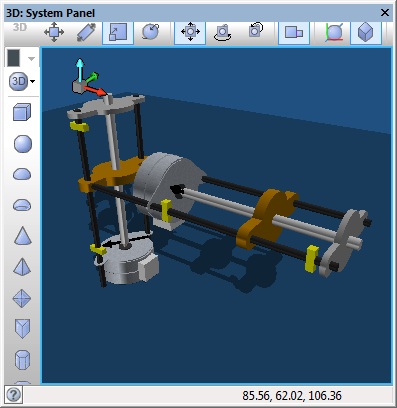Component: Stepper Motor (Generic) ()
| Author | Matrix Ltd |
| Version | 2.0 |
| Category |
Contents
Stepper Motor (Generic) component
A generic stepper motor model. Includes a visual simulation showing the activaton pattern of the coils. Make another object move along with the stepper shaft using the 'Target' property. The target object can rotate with the stepper shaft with a given gearing ratio, or be moved linearly according to a given lead screw pitch.
Component Source Code
Please click here to download the component source project: FC_Comp_Source_Stepper_Motor_Generic.fcfx
Please click here to view the component source code (Beta): FC_Comp_Source_Stepper_Motor_Generic.fcfx
Detailed description
No detailed description exists yet for this component
Examples
Attaching a primitive to a stepper motor
This example links a panel primitive to the output of the motor.
![]() Stepper Example 1
The linked object can be rotated or moved in a fixed direction by the motor.
Stepper Example 1
The linked object can be rotated or moved in a fixed direction by the motor.
Linear movement using a stepper motor
This example links two stepper motors together using linear type movements rather then rotational similar to a stepper attached to a lead screw.
![]() Stepper Example 2
The stepper is linked to the objects on the panel using properties and grouping.
Stepper Example 2
The stepper is linked to the objects on the panel using properties and grouping.
Creating a multi-axis actuator using stepper motors
This example links three stepper motors together using panel primitive objects and groups.
![]() Stepper Example 3
Here we can see the actuator arm in motion.
Stepper Example 3
Here we can see the actuator arm in motion.


